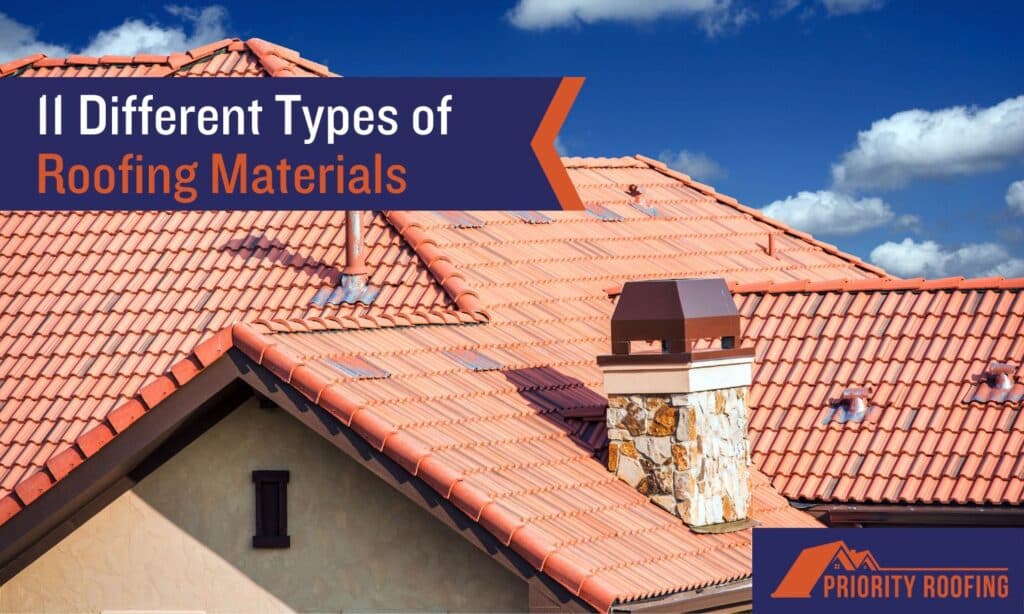The 11 Roofing Materials You Should Know
In the distant past, humans relied on caves and large trees for shelter. We have a whole catalog of roofing options. Homeowners can choose from a wide range of roof options, including asphalt shingles, slates, metal, wooden, or concrete tiles.
A new roof, regardless of the material you choose, is a major investment. If you notice any damage to your roof, you could face expensive leak remediation in the near future. Choose the right roof for your home, and you will be protected from leaks for many years.
You can choose from a variety of roofing materials, such as metal shingles and wood shakes. Rather than sticking with what you have, you might consider upgrading to a more durable or modern material. When choosing the best type of roof, you should consider appearance, durability, roofing material costs, and structural concerns.
When it’s time to replace your roof, here are 11 different types of materials you should consider.
Asphalt Shingles
Composite asphalt shingles are used in almost 90% of US homes because they are affordable, durable, and easy to install. They cost only $1.50 to $4.50 per sq. foot, or about $8,000 for a roof installation. Asphalt shingles can last for up to 30 years and can be recycled into pavement.
The manufacturers mix asphalt, fiberglass, and mineral composites to create different colors, such as gray, brown, or red. Because of sun exposure, these colors fade with time. The quality and color of architectural or 3-tab shingles will differ.
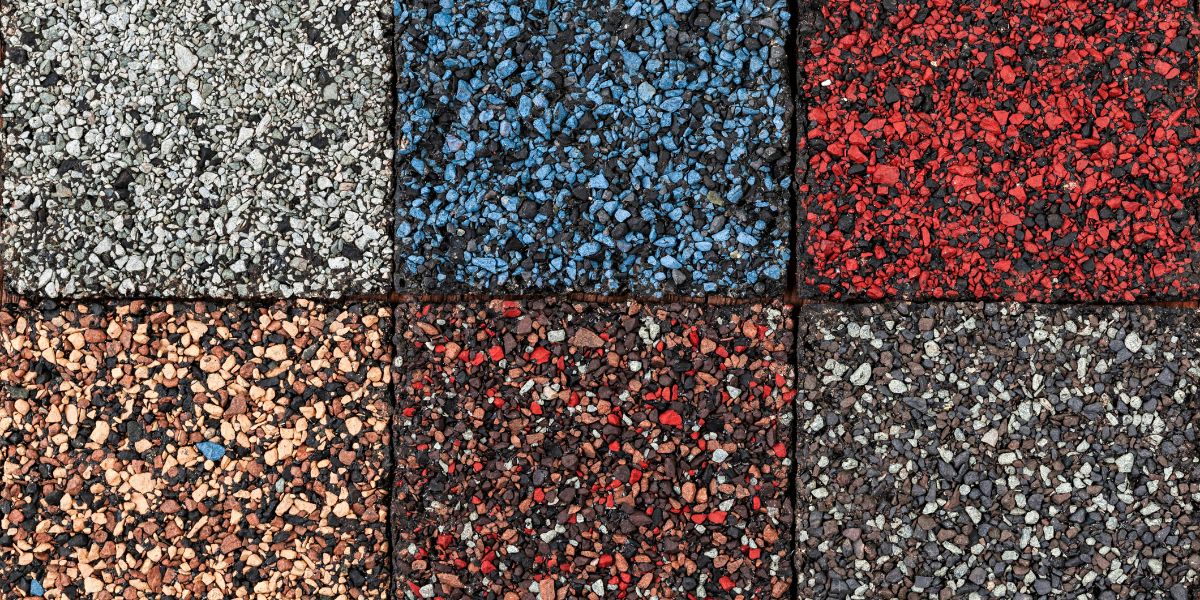
Pros
- Buy Tickets Online
- Low-maintenance
- Find it easily
- It works well in all climates
- Available in many colors
- Recyclable
Cons
- Color fades when exposed to sunlight
- Wind damage is a problem for 3-tab style.
- Short lifespan
Architectural and Three Tab
Architectural asphalt shingles consist of individual tiles that are thicker than the three-tab shingles. They create a durable, layered texture on your roof. Architectural shingles are more expensive because they use a higher-quality material and require a longer installation. They can last up to 30 years and are more resistant to weather.
Asphalt shingles with three tabs are thinner, and they’re cut so that it looks like there are three shingles. It allows for a faster installation, and it creates a brick-like pattern. These roofs are susceptible to high winds, and they last between 7 and 15 years. They are the most cost-effective roofing options.
Metal Roofs
Metal roofing is a popular choice today, even though it has been around for centuries. Sheets and shingles are still popular today, mainly because they’re affordable, easy to transport, low-maintenance, and look beautiful, even as they age. Metal sheets and shingles can last for up to 80 years and cost anywhere from $6 to $14 a square foot, depending on the design and material. The metal can be sealed with a variety of sealants and is available in a wide range of colors. Additionally, some styles can be painted to enhance their appearance.
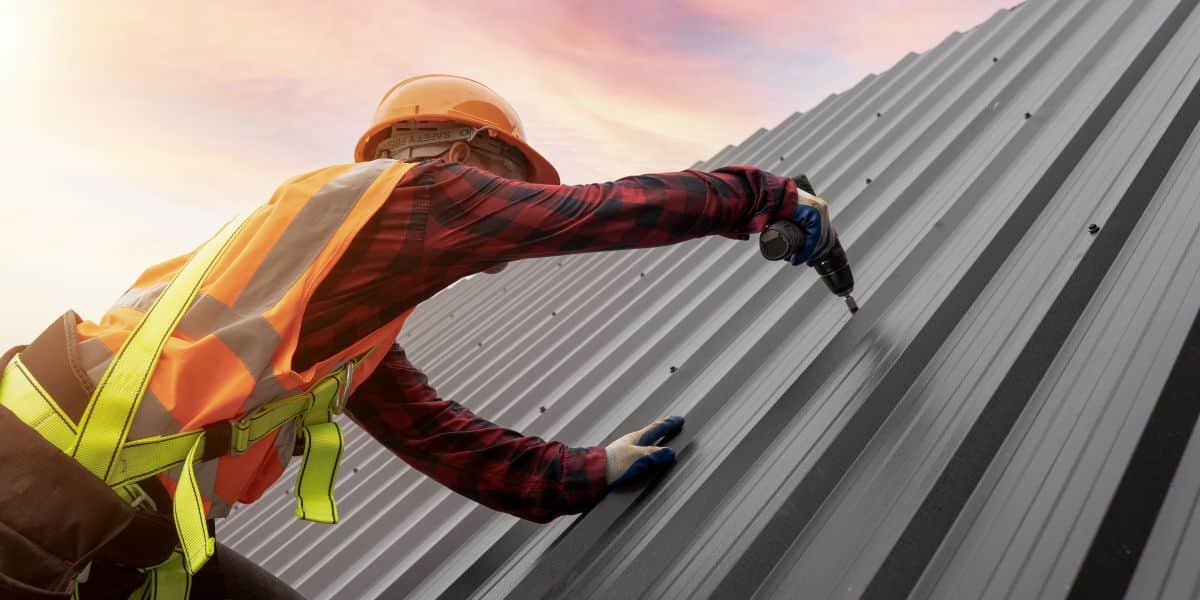
Pros
- Low-maintenance
- Durable
- It can mimic slate, wood or asphalt
- Colors of the rainbow
- Lightweight
- Recyclable
Cons
- Soundproofing is needed to reduce noise
- If installed incorrectly, the material may warp or have ripples.
- Installation and repairs require specialized labor
Standing Seam Shingles
Installing standing seam metal roofs with care creates straight vertical lines. The cost of installing metal sheets such as this can range between $9 and $14 per square foot.
Metal shingles can be manufactured to look like slate, asphalt, or wood. On average, they cost $1 to $3 less per square foot than standing seam shingles.
Wood Roofs
Wood roofs look great on Cape Cod-style homes, Craftsman-style houses, and Tudor-style houses. As they age, they change from sandy brown to silvery gray. In dry climates, wood roofs can last up to 50 years. However, in areas prone to fires like California, they need to be treated. Wood roofing is more susceptible to damage in wet climates such as those on the East Coast.
Building materials like cedar, redwood and pin are popular because they repel insects. The most popular roofing material is cedar shake, which costs between $5 and $7 per square foot.
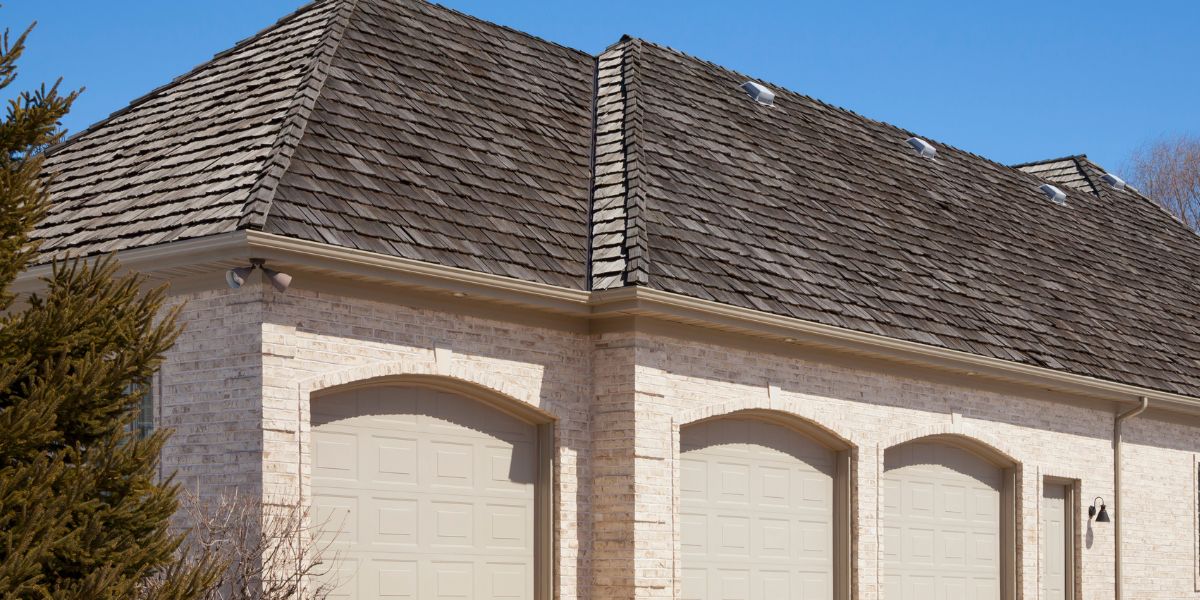
Pros
- Curb Appeal
- Natural Material
Cons
- Water damage, mold, mildew, and rot are all possible.
- Treatment with chemical preservatives and fire retardants may be required
- High-maintenance
Shakes and Shingles
Two ways are available to form wood roofing.
- The wedge-shaped shakes give a natural and rugged appearance. This is the most expensive option. It costs around $3.50 per sq. foot, and takes between $7 and $13 to install.
- Shingles can be sawmilled to a uniform width, length, and thickness to produce clean lines. On average, they are $1 to $2 cheaper than shakes.
Clay Tiles
The glazed earthenware roofs of China date back to 5,000 years ago. The tiles cost between $10 and $18 per square feet, but they last for 50 to 100+ years. Choose from styles such as Spanish, French or Scania.
Clay tiles are more durable than other roofing materials, even though they cost more to install and maintain. Terracotta roofing is common in areas like Southern California and Florida, as it is ideal for hot climates, can withstand winds up to 150 mph, and is fire-resistant.
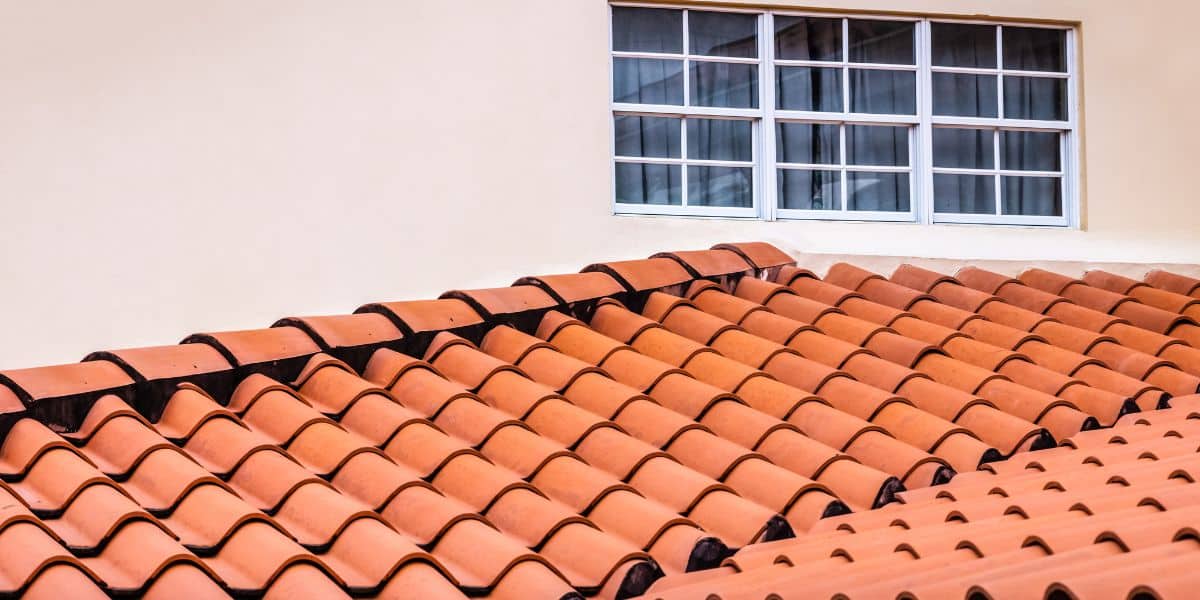
Pros
- Low-maintenance
- The curb appeal of your home
- Terracotta, brown, gray, and red are all colors that can be used.
- Natural materials
- Temperature control in the home
Cons
- Vulnerable to impact
- It may need additional structural support due to its weight
- Installation and repairs may require specialized labor
Slate Roofs
Slate is a durable roofing material that costs between $9 and $20 per square foot. It can last between 50 and 200 years and is resistant to hail, high winds, extreme temperatures, and fire.
You can choose from natural quarried slate or synthetic slates like bituminous or fiber cement. Synthetic slates are much cheaper and have many of the benefits of natural slate.
Pros
- Longevity
- Low-maintenance
- Durable
- Gray, blue, brown, green and red are all colors.
Cons
- Cost
- It may need additional structural support due to its weight
Green Roofs
Green roofs, or living roofs, cover your home in vegetation such as grasses and native wildflowers to support pollinators. Installing them costs between $10 and 25 per square foot. They have numerous benefits, including reducing excessive heat outside your home and rainwater runoff. Green roofs can last up to 50 years.
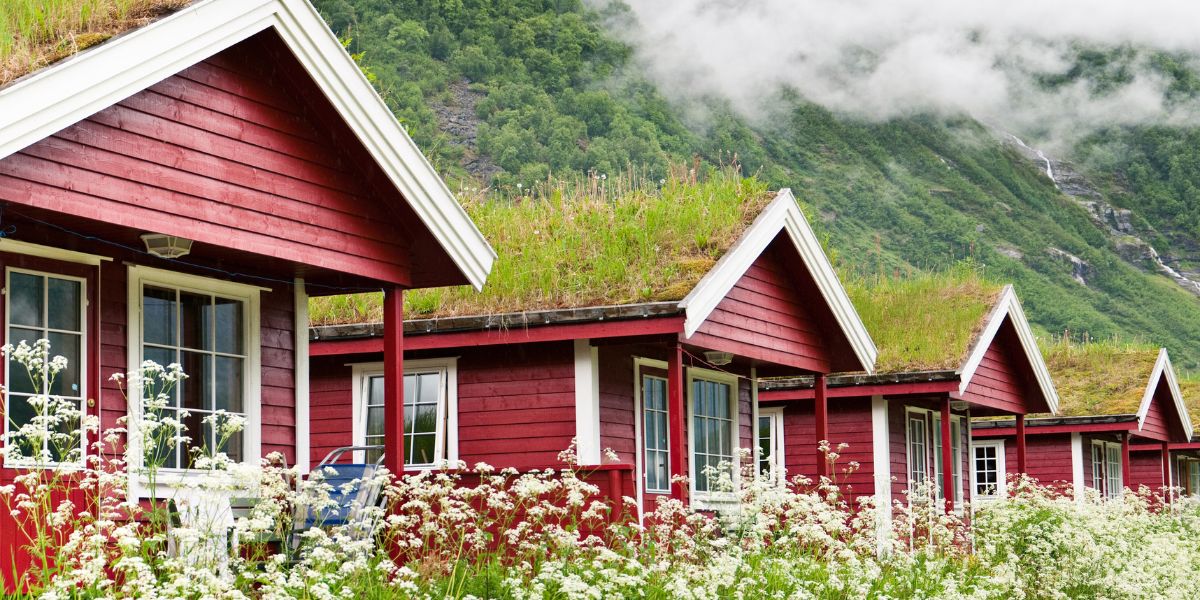
Pros
- Durable
- Environmental Support
Cons
- Water maintenance and gardening
- Extra structural support is needed for water and weight.
- Specialized labor is required
Solar Shingles
Solar shingles are among the most recent types of roofing material. To install solar shingles, you’ll need a roofing contractor who is experienced in BIPV (building-integrated photovoltaics).
Solar shingles are a costly investment, even though they may last for up to 30 years. Installation costs between $21 and $25 per square foot. They can increase the value of your house by up to $15,000. Solar power in the US is set to grow.
Pros
- You can produce renewable and usable energy at home
- Improves resale value
Cons
- Installation and repairs require specialized labor
- Maintenance Moderate
- Extra structural support is needed for wiring and weight
Roll Roofing
Rolling roofing is one of the more affordable roofing options. It’s popular among homeowners and contractors on a tight budget. The installation materials and labor are both affordable. This rolled material is best for roofs with a lower slope. It can be easily hammered into place. However, it should not be hammered on flat roofs, as this can lead to water leaks.
Pros
- Roofs with low slopes benefit from this product
- Underlayment is not required
Cons
- Only five to ten years.
- The quality of some products may not be comparable to those that are more expensive
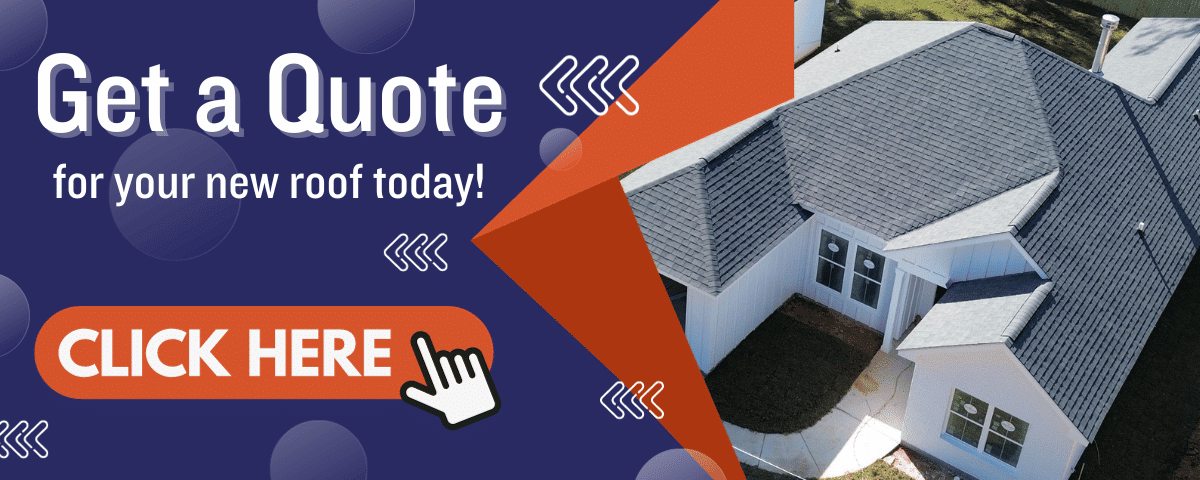
In Conclusion
As you can see, there are many different types of residential roofing to choose from (more than most people realize). Each type of roofing is beneficial in its own way. Of course, it’s up to you to decide which one is right for your home. If you are in the New Orleans area, call Priority Roofing for a free, no-obligation quote today.

